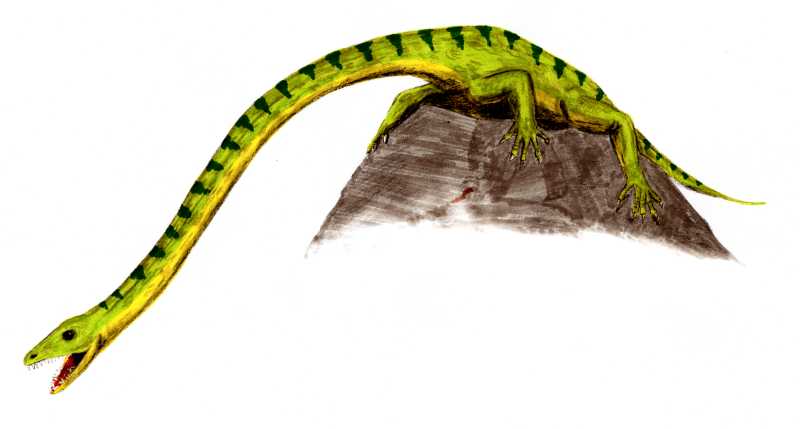The Long-Necked Reptile of the Triassic
Meet Tanystropheus, a fascinating reptile from the Middle Triassic period, around 240 million years ago!

| Meaning | Long necked |
| Pronunciation | TAN-ee-STRO-fee-us |
| When: | Middle to Late Triassic (about 242–227 million years ago) |
| Where: | Europe (Switzerland, Italy, Germany), Middle East (Israel) |
| What: | Archosaur marine reptile (Archosauromorph) |
| Weight: | Estimated around 60–100 kg (130–220 pounds) |
| Length: | Approximately 6 meters (20 feet), with a neck comprising about half its total length |
| Diet: | Carnivorous or piscivorous (likely fed on fish and small marine organisms) |
| Discovered: | First described by Franz von Huene in 1906 |
Tanystropheus is best known for its incredibly long neck, which could be three times the length of its body.
This unique feature made Tanystropheus look quite unusual, resembling a modern giraffe in terms of proportions.
It had a slender, elongated neck made up of very long vertebrae, and a body that was relatively small in comparison.
Tanystropheus lived in coastal environments, where it likely used its long neck to catch fish and other small marine creatures without having to move its body much.
Imagine Tanystropheus lurking near the water’s edge, its head darting out to snatch prey.
